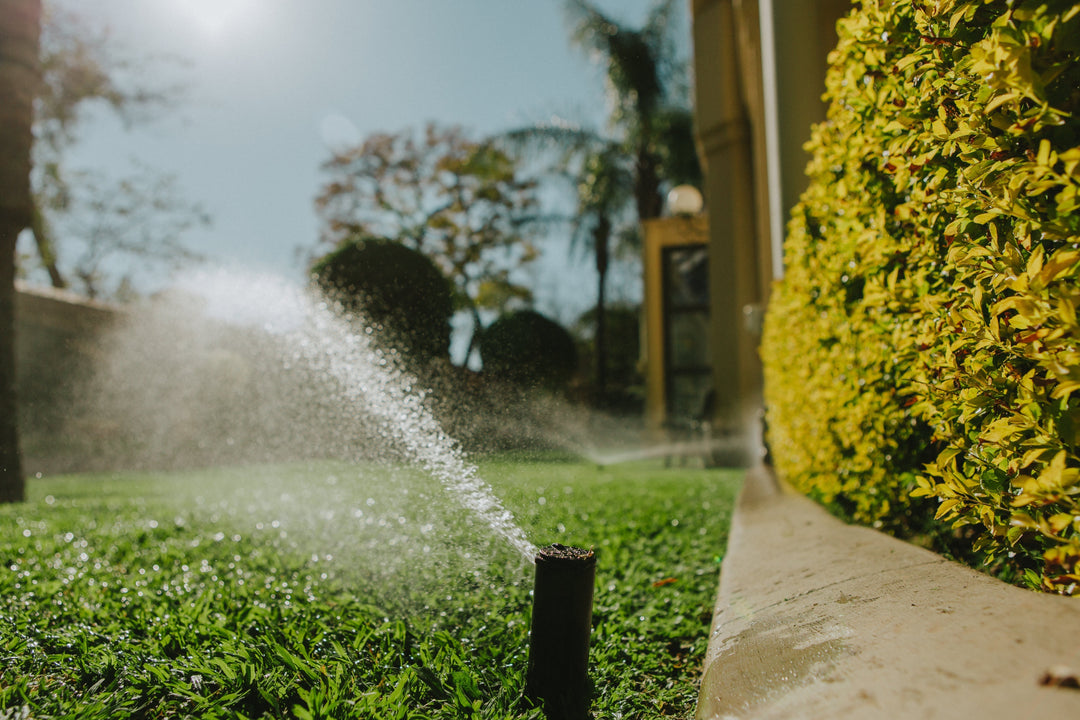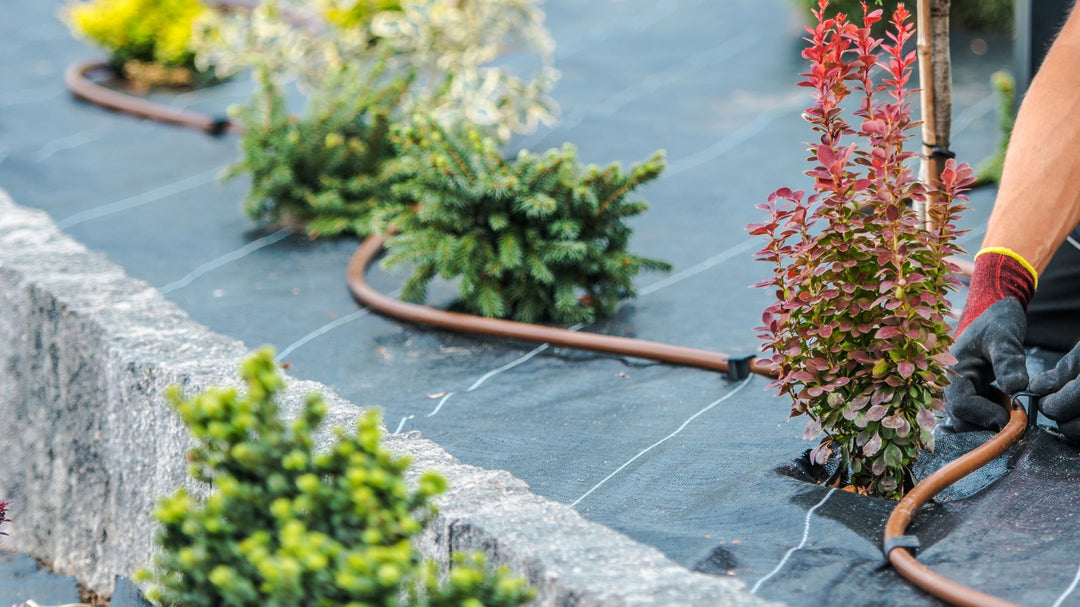Water-Saving Hacks: Smart Sprinkler Selection and Placement

Beat the heat without breaking the bank—here's how the right sprinkler setup can slash your water bill while keeping your yard green.
Summer's scorching heat is always here before you know it, and if you're like most homeowners, you're probably wondering how to keep your lawn lush without watching your water bill skyrocket. The secret isn't just running your sprinklers more—it's running them smarter.
Whether you're dealing with drought restrictions or just want to be a responsible steward of our water resources, the right combination of sprinkler heads and strategic placement can cut your water usage by 30-50% while actually improving your lawn's health. Let's dive into the game-changing strategies that weekend warriors swear by.
Understanding Sprinkler Head Types and Their Superpowers
Not all sprinkler heads are created equal. Think of them as specialized tools—each one designed to solve specific watering challenges in your landscape.
Pop-Up Spray Heads: The Workhorses
Pop-up spray heads are your go-to for most residential lawn areas. They deliver water in both fixed patterns (quarter, half, or full circle) and adjustable patterns that you can fine-tune from 0 to 360 degrees. Available in radii from 8 to 18 feet, they're perfect for precise coverage control.
- Best for: Regular lawn areas, tight spaces near walkways
- Water efficiency: Moderate to good
- Coverage: 8–15-foot radius (match radius within each zone for maximum efficiency)
- Recommended: Orbit Professional Pressure-Regulating Pop-Up Spray Heads (like SKU 80356) - these include built-in pressure regulation that maintains consistent water distribution even when pressure fluctuates
Gear-Drive Rotors: The Distance Champions
These rotating heads cover much larger areas—up to 52 feet—with a slower, more even application rate. The key advantage? Lower precipitation rates mean better soil absorption and less runoff.
- Best for: Large open lawn areas, slopes
- Water efficiency: Excellent
- Coverage: 25–52-foot radius
- Recommended: Saturn III Gear-Drive Rotor (SKU 55069) for smaller areas or Voyager II Professional (SKU 55661) for maximum coverage
Impact Sprinklers: The Heavy-Duty Options
The classic "tick-tick-tick" sprinklers you remember from childhood are still champions for certain applications, especially where debris or hard water might clog other types. They are available in both above ground (attaches to a hose) and underground (pops-up when needed) variations
- Best for: Large areas, dirty water conditions, agricultural uses
- Water efficiency: Good with proper adjustment
- Coverage: Up to 45 feet
-
Recommended: Pulse XL Pop-Up Impact Rotor (SKU 55201) or the 1/2 Inch Brass Impact Sprinkler on Tripod Base (SKU 58308N) for residential use
Drip Irrigation: The Precision Tool
For landscaped areas, flower beds, and shrubs, nothing beats drip irrigation for water efficiency—it delivers water directly to plant roots with minimal evaporation.
- Best for: Landscaped beds, vegetable gardens, trees, shrubs
- Water efficiency: Outstanding (90%+ efficiency)
- Coverage: Targeted application
- Recommended: Complete garden setups like the Garden Box Drip Irrigation Kit (SKU 61015) with smart controls
Quick Selection Checklist:
- [ ] Lawn areas under 18 feet: Pop-up spray heads (match radius within zones)
- [ ] Large lawn areas: Gear-drive rotors
- [ ] Slopes or windy areas: Low-angle rotors or smart controllers with cycle-and-soak
- [ ] Landscaped beds: Drip irrigation
- [ ] Dirty water conditions: Impact sprinklers
Strategic Placement: Maximum Coverage, Minimum Waste
The difference between a water-wasting system and an efficient one often comes down to head-to-head coverage and proper spacing. Here's how to get it right.
The Head-to-Head Coverage Rule
This is irrigation 101: position your sprinkler heads so the water from each head reaches the next head. This eliminates dry spots and prevents over-watering in some areas while under-watering in others.
- For spray heads: Space them based on nozzle radius (8-15 feet apart)
- For rotors: Space them 25-52 feet apart (depending on model)
- For impact sprinklers: 35-45 feet apart
Smart Spacing and Setback Guidelines
Keep sprinkler heads about one foot away from sidewalks, driveways, and edging. This small setback dramatically reduces overspray while still providing adequate coverage to lawn edges.
Zone Design That Actually Works
Don't mix different sprinkler types in the same zone—they have different precipitation rates. A spray head might apply 1.5 inches per hour while a rotor applies 0.3 inches per hour. Mix them, and you'll either drown your rotor areas or starve your spray areas.
Pro tip: Group similar water needs together. Your drought-tolerant front yard shouldn't be on the same zone as your water-loving back lawn.
Avoiding the Common Placement Disasters
The Sidewalk Soaker: Adjust spray patterns so you're watering grass, not concrete. Those quarter-pattern nozzles exist for a reason. Also try placing your sprinklers a foot or two away from concrete, it reduces runoff and the potential for a broken sprinkler.
The Windy Waste: In consistently windy areas, switch to rotors with lower trajectory nozzles or move to drip systems entirely.
The Smart Slope Solution: On slopes steeper than 10%, smart controllers like the B-hyve system automatically implement cycle-and-soak programming. Instead of applying water faster than the soil can absorb it, the system waters for shorter periods with breaks in between, allowing water to infiltrate rather than run off.
Strategic Placement Checklist:
- [ ] Measure and mark head-to-head coverage
- [ ] Group similar sprinkler types by zone
- [ ] Adjust spray patterns away from hardscapes
- [ ] Use low-angle nozzles in windy areas
- [ ] Plan for slopes with cycle-and-soak programming
Seasonal Adjustments for Hot Weather Success
When temperatures soar, your watering strategy needs to shift. Here's how to adjust your system for maximum efficiency during the hot months.
Programming Changes That Make a Difference
Early Morning Watering: Set your system to run between 4-6 AM. You'll lose less water to evaporation and wind, plus you'll avoid the afternoon heat stress that can shock grass.
Cycle and Soak: Instead of running each zone for 20 minutes straight, try four 5-minute cycles with 30-minute breaks between them. This gives water time to soak in rather than running off.
Deeper, Less Frequent: Switch from daily light watering to 2-3 times per week deep watering. This encourages deeper root growth and better drought tolerance.
Physical Adjustments for Summer
Raise Pop-Up Heights: Taller grass needs higher spray patterns. If you've let your lawn grow longer for summer (smart move!), make sure your pop-ups clear the grass height.
Check and Clean Nozzles: Summer heat accelerates mineral buildup. Clean nozzles monthly and replace any that show uneven patterns.
Adjust Arc Patterns: As plants grow during the season, you might need to adjust spray patterns to maintain proper coverage.
Smart Controller Integration
If you're ready to take the leap into smart irrigation, systems like the B-hyve Smart Controllers automatically adjust watering based on local weather conditions, soil moisture, and plant needs.
Hot Weather Adjustment Checklist:
- [ ] Shift watering to early morning (4-6 AM)
- [ ] Implement cycle-and-soak programming
- [ ] Clean nozzles and check spray patterns monthly
- [ ] Adjust for seasonal plant growth
- [ ] Consider smart controller upgrade
The Real Cost of Water Waste (And How Much You Can Save)
Let's talk numbers—because even small inefficiencies add up to big money over a summer season.
Where Your Water (and Money) Goes
- Evaporation losses: Watering during the day can lose 30-50% to evaporation
- Runoff waste: Poor spacing and over-watering creates runoff that does nothing for your plants
- Over-spray: Watering sidewalks, driveways, and walls wastes 10-20% of applied water
- System leaks: A single broken spray head can waste 300+ gallons per month
The Savings Breakdown
- Proper head selection and placement: 20-30% water reduction
-
Optimal timing and programming: 15-25% additional savings
- Regular maintenance and adjustments: 10-15% ongoing savings
- Smart controller integration: Additional 10-20% savings
Real-world example: A typical 5,000 sq ft lawn using 1 inch of water per week consumes about 3,100 gallons weekly. With smart head selection and placement, you could reduce this to 2,000-2,500 gallons while maintaining the same (or better) lawn quality.
The Compound Effect
These savings compound over time. A 30% reduction in irrigation water use on a $200/month summer water bill saves you $60 monthly, or $240+ over a four-month hot season. Factor in the improved plant health from better water distribution, and you're looking at long-term landscape value too.
Cost-Benefit Calculation Checklist:
- [ ] Calculate current water usage per zone
- [ ] Identify biggest waste sources (timing, runoff, broken heads)
- [ ] Estimate potential savings from head upgrades
- [ ] Factor in improved plant health and property value
- [ ] Consider smart controller ROI over 2-3 seasons
Quick Audit Guide: Spotting the Water Wasters in Your Yard
Time for some detective work. Grab a notebook and walk your property—here's what to look for.
The 15-Minute System Health Check
Turn on each zone and observe:
- Coverage gaps: Look for brown or stressed areas that might indicate poor coverage
- Over-spray: Note any water hitting driveways, sidewalks, or buildings
- Pressure problems: Weak or distorted spray patterns often indicate pressure issues
- Head-to-head coverage: Can you see overlap between adjacent sprinklers?
- Runoff: Watch for water running down slopes or pooling in low areas
The Catch Cup Test
This is the gold standard for measuring system uniformity. Use Orbit B-hyve Sprinkler Catch Cups (SKU 26251) throughout a zone and run the system for 15 minutes. These professional-grade catch cups follow Cal Poly ITRC standards for accurate testing, and if you're using the B-hyve app, the results are automatically calculated and can update your smart programming.
- Good system (75% or better DU): All containers have within 20% of the average
- Needs work (50-75% DU): Wide variations indicate poor coverage or pressure problems
- Pro upgrade needed (50% or lower DU)): If most containers are empty or overflowing
Red Flags That Demand Immediate Attention
- Broken or missing heads: Obviously wasteful and creates dead spots
- Tilted heads: Often indicates settling or damage, causes uneven coverage
- Mixed head types in one zone: Guarantee uneven watering
- Watering during windy periods: Automatic water waste
- No rain sensor: Missing free water when nature provides it
Seasonal Efficiency Markers
- Spring startup: Are all heads popping up properly after winter?
- Mid-summer: Are spray patterns still accurate as plants grow?
- Fall prep: Time to start thinking about winterization and system adjustments
System Audit Checklist:
- [ ] Walk each zone during operation
- [ ] Perform catch cup test on suspect zones
- [ ] Document pressure and coverage issues
- [ ] Check for broken, tilted, or clogged heads
- [ ] Verify proper head-to-head coverage
- [ ] Note any runoff or over-spray problems
- [ ] Plan priority repairs and upgrades
Putting It All Together: Your Water-Smart Action Plan
Ready to transform your irrigation system from water waster to efficiency champion? Here's your step-by-step game plan.
Phase 1: Quick Wins (This Weekend)
- Adjust spray patterns away from hardscapes
- Clean clogged nozzles and replace broken heads
- Reprogram timers for early morning watering
- Install rain sensor if you don't have one
Phase 2: Strategic Upgrades (Next Month)
- Replace inefficient heads with modern pressure-regulating models
- Add drip irrigation to landscaped areas
- Implement cycle-and-soak programming
- Consider smart controller upgrade
Phase 3: System Optimization (This Season)
- Redesign zones for head-to-head coverage
- Add separate zones for different plant water needs
- Install pressure regulation where needed
- Fine-tune seasonal adjustments
The Orbit Advantage
When you're ready to upgrade, Orbit's integrated system approach makes installation faster and more reliable. The PVC-Lock, Drip-Lock, and Blu-Lock systems eliminate the need for special tools, torches, or clamps—you can complete most upgrades with basic hand tools. Plus, components like the B-hyve smart controllers integrate seamlessly with existing systems while adding weather-smart automation.
The bottom line? A well-designed, properly maintained sprinkler system doesn't just save water—it creates a healthier, more resilient landscape that looks better and costs less to maintain. Your lawn (and your wallet) will thank you when the summer heat hits.
Remember: Small changes compound into big savings. Start with the quick wins, then work your way up to the bigger improvements. Every drop counts, and every dollar saved on your water bill is a dollar you can spend on enjoying your beautiful, efficiently-watered yard.






